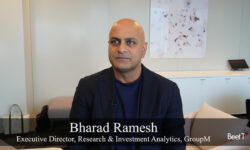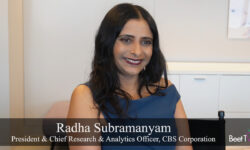The advertising industry is falling short in the effective measurement and allocation of ad impressions towards multicultural audiences.
That is the view of one company which just made a partnership to tackle the problem.
In this video interview with Beet.TV, Jon Stimmel, Chief Growth Officer at Sabio, highlights the need for a more nuanced understanding of different cultural segments.
A Focus on Diverse Segmentation
“We’re aggregating diverse audiences and groups that aren’t necessarily representative of the cultures that they represent,” Stimmel explains, highlighting
“If you look at Indian Americans now representing the largest sub-segment of Asian Americans, the preferences in viewing and the types of things they enjoy and the behavior that they exhibit is different from an Indian versus a Japanese versus Chinese,” Stimmel says.
He believes refining this focus will yield better outcomes in the industry.
Partnership with Mediahub
Sabio is an ad-tech platform offering a connected TV (CTV) platform that is powered by mobile phone data.
It claims to leverage app-level data from over 300 million mobile devices, which can then be fed into CTV buying systems. Sabio has its own DSP, SSP and DMP.
The company just inked a partnership with the media agency Mediahub to provide the agency access to clear multicultural audience segments and minority-owned media channels.
For Stimmel and Sabio, the challenge now is to redistribute Connected TV (CTV) dollars from the bigger players to more niche, multicultural segments.
A recent App Science U.S. Multicultural Trends Report found that multicultural audiences are bigger streamers than the general market, with Asian Americans, African Americans, and Hispanic Americans 33 percent, 17 percent, and 17 percent, respectively, more likely to have CTV streaming apps than the general market
Better Behavior Measurement
But, to truly move the needle forward, Stimmel believes something extra is needed.
“Getting away from proxies and more closer to behavior and being representative of people who actually are viewing and what their cultures and interests are, allows us in an addressable world to be able to target them more effectively,” he says.
He also emphasizes the importance of diverse representation within media and brand executives, stating that it contributes to a more comprehensive understanding of what different audiences want to see.





































